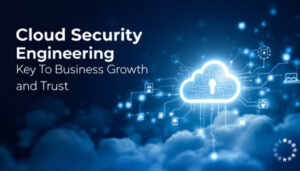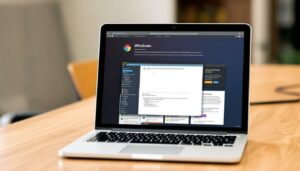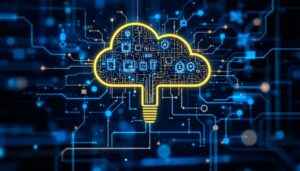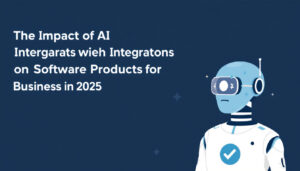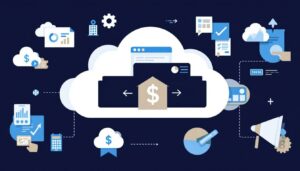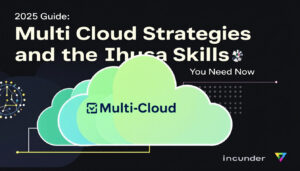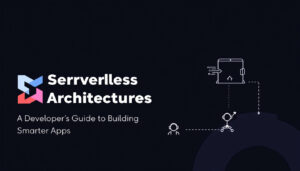SaaS monetization is gaining renewed urgency as the software market changes. By 2025, product-led growth, tighter budgets, and increased global competition will impact revenue models. Adapting to these shifts is essential for sustained profit and long-term relevance.
This article outlines realistic and effective strategies for developers, business analysts, and IT professionals. Readers will gain a clear understanding of proven methods to maximize software revenue. Each approach focuses on practical steps, aiming to address shifting customer needs and greater financial scrutiny across the SaaS sector.
Emerging Monetization Models for SaaS in 2025
 Photo by Markus Winkler
Photo by Markus Winkler
The SaaS market is shifting away from basic monthly subscriptions. In 2025, successful providers are moving towards flexible and dynamic monetization models to keep pace with user demands and budget expectations. The rise of usage-based, tiered, hybrid, and value-focused pricing systems reflects a fundamental change: buyers now expect fairer alignment between what they pay and the real value they receive. Below is an analysis of how these trends are shaping practical approaches for monetizing SaaS platforms.
Usage-Based Pricing Strategies: Explore Metered Billing, Pay-as-You-Go, and Benefits for Various User Types
Usage-based pricing (UBP) lets customers pay only for what they use. This model works well in a climate where predictability and scalability are essential. Metered billing and pay-as-you-go options serve different segments, from startups watching cash flow to enterprises scaling workloads on demand.
Key strengths of usage-based pricing:
- Fairness: Customers align expenses with actual utilization.
- Flexibility: Adapts easily to periods of high or low use.
- Encourages trial: Lower barriers attract new users unwilling to commit to large up-front fees.
Large cloud service providers pioneered UBP, but now more SaaS businesses across analytics, security, and developer tooling are following suit. Recent reports show that 78% of companies adopting usage-based pricing did so within the last five years, signaling fast market adoption (State of Usage-Based Pricing 2025 Report – Metronome).
Tiered and Hybrid Pricing Models: Combining Tiered Features with Flexible Usage Pricing
Tiered pricing structures remain popular. Typically, these models offer several levels of features and support, ensuring each customer pays for only what they need. Hybrid approaches are gaining ground, blending flat tiers with variable usage charges to better match growth-oriented customers.
Common characteristics of tiered and hybrid models:
- Defined feature sets: Basic, Pro, and Enterprise packages with increasing functionality.
- Add-ons: Optional upgrades or overage fees for heavy usage.
- Customization: Companies can combine base tiers with metered elements for more precise billing.
Leading SaaS vendors set a strong example. For instance:
- Some CRM tools offer a base tier for small teams, mid-level plans for growth-stage companies, and a top tier with custom options and higher data limits. Users who go beyond those limits incur additional charges.
- Productivity software might include generous main features within core tiers but add usage-based fees for advanced analytics or API calls.
Interested in modern pricing page layouts? These best SaaS pricing page examples for 2025 illustrate tiered and hybrid approaches from successful SaaS brands.
Value-Based Monetization: Pricing Aligned to Actual Customer ROI
Value-based pricing centers the focus on the customer’s actual return from the product. With this model, businesses assess what specific outcomes matter to the client—such as improved efficiency, reduced downtime, or cost savings—and align pricing to that measurable benefit.
This approach is growing for several reasons:
- Customers are under pressure to justify every expense.
- Transparency and trust improve retention rates.
- Superior customer outcomes usually translate to higher lifetime value for the vendor.
Methodology for value-based pricing:
- Identify core outcomes: Determine which KPIs matter most to customers.
- Measure impact: Use analytics or case studies to track product-driven results.
- Map pricing to value: Develop tiers or flexible packages based on quantified ROI improvements.
For best results, companies conduct regular reviews with clients to adjust pricing when measurable outcomes change. For an in-depth breakdown of value-based pricing in SaaS, see this comprehensive SaaS pricing guide for 2025.
By adopting these emerging models, SaaS providers can optimize revenue streams while meeting the evolving demands of their customers. For additional insights, strategies for retaining SaaS clients can offer valuable context on ensuring pricing models support long-term business growth.
Leveraging Product-Led Growth (PLG) for Revenue
Product-led growth (PLG) continues to shape the way SaaS firms drive both adoption and monetization. This model puts the product at the center of the customer journey, allowing users to discover value independently through free trials or freemium features. In 2025, self-service experiences and embedded monetization opportunities remain central. By focusing on user experience and adaptability within the product, SaaS providers can convert higher volumes of users from free plans to paying subscribers.
PLG’s proven frameworks enhance user acquisition and boost conversions, with strategies that span upselling, cross-selling, and onboarding optimization. When implemented with precision, these initiatives consistently increase average revenue per user (ARPU) and reduce churn rates.
Upselling and Cross-Selling Techniques: Share actionable tactics for increasing ARPU (average revenue per user) with in-app offers and personalized recommendations
Modern SaaS products use deliberate upselling and cross-selling strategies to maximize user value. Upselling encourages existing users to move to higher-tier plans, while cross-selling introduces relevant add-ons or complementary tools. Both approaches increase ARPU and drive deeper product stickiness.
Here are actionable tactics to refine these efforts:
- In-App Notifications: Deliver targeted upgrade prompts or feature recommendations inside the application. Timely, non-intrusive messages help guide users toward high-value actions without disrupting workflow.
- Personalized Offers: Use user interaction data and behavioral segmentation to offer tailored recommendations. For instance, users who frequently hit plan limits are strong candidates for higher tiers.
- Bundled Add-Ons: Present feature bundles or adjacent services that complement the user’s workflow. Effective bundling reduces friction and supports logical product expansion.
- Trial Upgrades: Allow users to test premium features temporarily. Exposure to advanced capabilities can drive stronger motivation to upgrade or extend subscriptions.
- Progressive Disclosure: Gradually unlock advanced features behind paywalls, providing a roadmap for upgrading as user needs mature.
The key is placing upsell offers when users see direct value, not when it feels like a sales pitch. Predictive analytics and customer journey mapping greatly enhance the accuracy of personalized recommendations. For further reading on user acquisition best practices, see the guide to Lead Generation Strategies 2025.
Optimizing User Onboarding for Monetization: Best practices for converting free users to paid using interactive onboarding and behavioral triggers
A streamlined onboarding process shapes first impressions and long-term conversion rates. In a PLG framework, onboarding is more than just guidance—it becomes a critical monetization lever. Well-designed onboarding helps users realize value quickly, naturally steering them towards premium features and paid plans.
Best practices for onboarding optimization include:
- Interactive Product Tours: Guide users through step-by-step tutorials highlighting both core features and unique paid capabilities. Clear visual cues accelerate learning and reveal added value early in the journey.
- Contextual Tooltips and Prompts: Offer relevant prompts based on the user’s immediate context or activity. For instance, show upgrade options when a user reaches the limits of a free feature.
- Behavioral Triggers: Set up workflows that respond to in-app actions. For example, after a user completes a high-value workflow, prompt a discount offer for an annual subscription.
- Usage Metrics Dashboards: Empower users to visualize how much value they are getting, and show them what additional benefits a premium tier would enable.
- Email Drip Campaigns: Support in-app onboarding with targeted educational content and exclusive offer reminders timed to user engagement milestones.
A cohesive PLG onboarding strategy turns product engagement into a growth engine. By capitalizing on real-time behavioral data and providing timely, relevant nudges, SaaS companies prompt more users to cross the threshold from free to paid accounts. Thoughtful feature highlighting and prompt timing help maximize free-to-paid conversion.
Successful PLG implementation hinges on continuous optimization and adaptation. Internal product analytics should inform every change, ensuring the customer journey remains aligned with evolving user expectations.
 Photo by Kaboompics.com
Photo by Kaboompics.com
By focusing on smart upselling, relevant cross-selling, and robust user onboarding, SaaS providers using PLG are well-positioned to drive consistent, organic revenue gains in 2025. These strategies support both immediate monetization and long-term growth by anchoring value in the product experience itself.
Expanding Revenue Channels: Partnerships, Integrations, and Marketplaces
Partnerships, platform integrations, and strategic distribution on SaaS marketplaces present new paths for recurring revenue. As the SaaS sector matures, these channels provide both reach and resilience. Companies can expand their user base, improve product stickiness, and foster new payment streams by opening up their products to broader ecosystems. Below are practical frameworks on where value resides—and how to realize it—when monetizing SaaS APIs or leveraging app stores.
API and Platform Monetization: Detail direct and indirect monetization strategies through API access and ecosystem features.
For many SaaS firms, APIs sit at the core of their product value. APIs let customers and partners connect, automate, and extend business workflows, which in turn deepens product adoption. Directly charging for API usage is an established practice, particularly for developer tools, communications, and specialized analytics providers.
Direct monetization strategies include:
- Pay-per-use or tiered API access: Charge either a fixed fee or by the call, typically with different levels of throughput or features. This works well for applications where API usage directly correlates with customer value (e.g., payment gateways, messaging platforms).
- Freemium API access: Offer a limited free tier, then charge for premium endpoints, higher rate limits, or advanced security options.
- Partner and reseller programs: Allow technology integrators to embed or resell the API as part of their solution stack. This expands reach while generating incremental license fees.
Indirect monetization methods:
- Ecosystem expansion: A robust API unlocks integrations with other popular platforms, driving stickiness and new inbound users.
- Data sharing and insights: APIs that provide a unique dataset can attract partners willing to pay for access or derivative insights.
- In-app marketplace fees: Open APIs make it possible to build third-party add-ons, where the primary SaaS vendor collects a share of partner revenue.
Monetizing APIs requires a clear billing strategy, strong documentation, and a developer support model. Data privacy and rate limit fairness are essential for user trust and compliance. Notably, transparent API pricing and reliable service-level agreements (SLAs) remain non-negotiable for business clients. For those seeking to structure and market their product integrations, guides on pricing models and SaaS feature packaging can supplement these efforts.
Leveraging SaaS Marketplaces and App Stores: Practical steps to list on third-party platforms (like Salesforce AppExchange, AWS Marketplace) and the associated revenue opportunities.
 Photo by RDNE Stock project
Photo by RDNE Stock project
Listing SaaS solutions on major third-party marketplaces amplifies brand visibility and offers access to built-in buyer networks. Well-established platforms such as Salesforce AppExchange, AWS Marketplace, and Microsoft AppSource attract enterprise buyers seeking curated, secure, and scalable tools.
To maximize value on these platforms, companies should:
- Understand listing requirements: Each marketplace sets strict technical, legal, and security standards. Reviewing documentation and preparing resources well in advance streamlines the approval process.
- Tailor offering to marketplace buyers: Adjust feature sets or bundle integrations to fit common use cases among platform users.
- Factor in revenue share or listing fees: Most platforms take a percentage of every sale or charge a fixed listing fee. Pricing strategies must reflect these costs to protect profitability.
- Prepare marketing collateral: Strong product descriptions, screenshots, demo videos, and case studies aid conversion rates.
- Invest in customer support for marketplace channels: Rapid response times and clear resolution processes improve ratings and reviews, helping the product stand out in crowded environments.
Beyond access to a larger buyer pool, marketplaces may also support automated billing, distribution, and compliance. For SaaS teams seeking best-fit channels, a thorough review of digital product distribution options can provide clarity on where and how to list their solution. For a deeper look into selecting suitable platforms, review the expert analysis on Digital Product Selling Platforms 2025.
Expanding into these distribution channels not only unlocks incremental sales; it strengthens the product’s long-term market position through diversified, more stable revenue streams.
Data-Driven Optimization and Pricing Automation
Automated pricing and data-driven adjustment have become essential for SaaS profitability in 2025. The most successful SaaS firms deploy AI-powered tools and analytics to tailor offers, optimize pricing, and maximize the value of every customer relationship. This approach not only minimizes manual work but also captures new upsell and retention opportunities by understanding real-time market and user signals. Below, we review best practices in dynamic pricing, AI-driven automation, and precise segmentation to help SaaS businesses refine their strategies using data.
Dynamic Pricing with AI and Machine Learning
 Photo by RDNE Stock project
Photo by RDNE Stock project
AI and machine learning now form the core of automated SaaS pricing strategies. Advanced systems analyze thousands of data points—market demand, competitor moves, and individual usage patterns—to recommend or enforce price changes in real time.
Key features in new AI-powered pricing tools include:
- Real-time monitoring: Continually track market shifts, competitor pricing, and cost changes.
- Elastic pricing: Adjust price points in sync with demand trends and customer segments.
- Automated experimentation: Run A/B tests and dynamic promotions across account types with minimal manual effort.
- Predictive analytics: Anticipate willingness-to-pay and churn risk using historical and behavioral data.
Leading SaaS platforms have incorporated these tools to stay competitive:
- Companies refine their price points as market or customer data shifts, avoiding revenue loss from rigid fee models.
- For instance, an analytics SaaS platform might lower prices during non-peak seasons but increase them as demand surges during quarterly business reviews or major industry events.
- AI models also suggest personalized discounts or bundle offers by scanning historical renewal rates and upsell success metrics.
Adopting these technologies can require close coordination between finance, product, and engineering teams. Accuracy, transparency, and regular review cycles reduce the risk of customer confusion or dissatisfaction. For a broader discussion on how AI automation is shaping industry practices, see the analysis on how AI and machine learning will shape pricing strategies in 2025.
Segmentation and Personalization Tactics
Segmentation relies on grouping customers by shared traits, such as company size, industry, usage habits, or lifecycle stage. By applying granular segmentation, SaaS companies avoid one-size-fits-all pricing, moving toward more personalized and precise offers.
Modern personalization tactics involve:
- Behavioral segmentation: Use in-app actions, feature adoption, and frequency to create distinct customer cohorts.
- Transactional data: Base pricing and upsell paths on spend patterns, renewal history, or contract value.
- Engagement scoring: Identify at-risk accounts or high-growth potential segments to adjust outreach, pricing, or incentives.
Personalized pricing boosts conversions and increases customer satisfaction by aligning value with willingness-to-pay. For example:
- A SaaS vendor may offer starter discounts to high-potential startups, while proposing loyalty-based premiums for established enterprises.
- Another provider tailors renewal offers for accounts showing rapid expansion, keeping prices competitive but rewarding deeper platform adoption.
These methods require robust customer data management and seamless cooperation between product, sales, and marketing teams. Tools that combine customer insights, analytics, and dynamic pricing rules enable more effective experimentation and continuous refinement.
Evidence supports the benefits of this approach. A recent SaaS industry study shows companies using deep segmentation and personalization report measurable gains in net retention and customer lifetime value. Interested readers can explore SaaS trends for 2025 for additional expert commentary on automation and customer insight.
Internal product analytics provide further feedback for optimizing price tests and offer logic. For practical guidance on incorporating these insights into pricing and packaging, review the strategy advice in the piece on comprehensive lead generation strategies for 2025.
The precision that data-driven optimization and pricing automation bring is now a requirement for SaaS growth. These strategies ensure that pricing reflects changing market realities and customer preferences, fueling profit and sustainable long-term value.
Overcoming Monetization Challenges in 2025
SaaS companies in 2025 face sharper hurdles in turning technology into profit. Compliance demands and data privacy requirements grow more complex. Meanwhile, market competition continues to drive up acquisition costs, and customers expect more flexible, risk-free commitments. To thrive, providers must combine robust compliance practices with advanced retention tactics to protect existing revenue and maintain trust.
Navigating Evolving Compliance and Data Privacy Laws: Highlight necessary compliance practices and how regulatory changes impact SaaS monetization
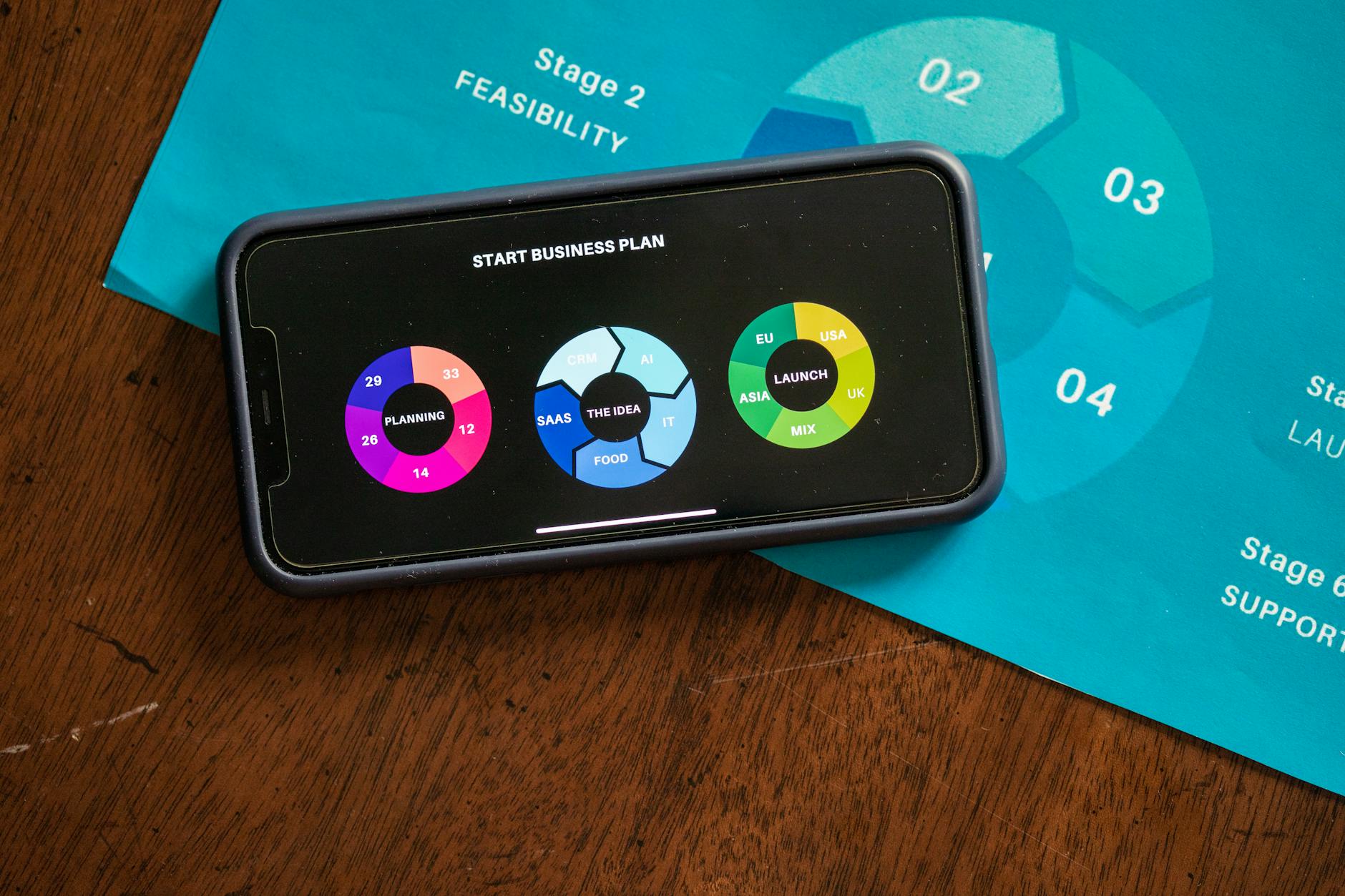 Photo by RDNE Stock project
Photo by RDNE Stock project
Governments worldwide have enacted tighter standards for data handling and transparency. As a result, SaaS companies in 2025 must take a clear, well-documented stance on privacy and security. Compliance gaps risk fines, lawsuits, and loss of customer trust—each of which can halt monetization.
Key compliance best practices for SaaS providers include:
- Ongoing staff training: Regular instruction ensures teams understand the latest privacy and security requirements.
- Frequent risk assessments: Systematic reviews of processes and code reduce vulnerabilities.
- Clear consent management: Customers need full control over their personal data, including the right to access, correct, or delete information.
- Automated compliance monitoring: AI tools now simplify tracking changes in regulatory obligations across global regions.
Several jurisdictions require SaaS vendors to demonstrate compliance before selling or integrating products. The shift from regional standards like GDPR and CCPA to global frameworks is reshaping how SaaS builders design products, store data, and approach monetization. Providers investing in training, clear consent workflows, and robust security protocols benefit from higher trust and smoother sales cycles. For a comprehensive overview of current compliance strategies, review the guidance in Security Compliance in 2025: The SaaS Guide.
Data privacy shifts also influence pricing and feature packaging. Many vendors must offer data controls as part of paid tiers, with auditable privacy tools now seen as table stakes for business buyer segments. To better anticipate future regulations and stay agile, see the insights on Data Privacy Laws in 2025: What You Need to Know.
Reducing Churn and Increasing Customer Retention: Specific retention strategies tailored to SaaS, such as proactive support, feature rollouts, and contract flexibility
Customer retention holds greater weight in high-stakes markets with rising acquisition costs. Reducing churn directly improves long-term profitability, especially when new user growth slows. SaaS providers adopting focused retention methods can widen their revenue base and lower reliance on aggressive acquisition spending.
Essential SaaS retention strategies include:
- Proactive support: Reach out early when users show reduced engagement or encounter issues. Anticipating needs, not just reacting to tickets, keeps satisfaction high.
- Timely feature rollouts: Introducing valuable updates or integrations at regular intervals helps reinforce the business case for renewal.
- Contract flexibility: Allow users to resize plans, upgrade or downgrade tiers, and add features mid-cycle. Adapting to changing customer needs lowers friction and discourages switching.
- Usage insights dashboards: Share clear reports on ROI and product adoption, reinforcing perceived value and making renewal conversations more persuasive.
Many companies now use segmentation to target at-risk cohorts. These users receive custom offers or specialized outreach based on behavioral signals—such as a sharp drop in logins or decreased API usage. Regular product feedback sessions and transparent communication also signal ongoing commitment, making churn less likely.
Retaining customers is not only about resolving issues but about demonstrating improvement and value. For SaaS teams looking to further refine their approach, explore best practices on comprehensive lead generation strategies for 2025 to understand the full lifecycle impact of retention-focused communication.
By focusing on compliance and retention, SaaS businesses protect profits and secure user loyalty in a stricter, more competitive 2025 marketplace.
Conclusion
Adopting practical monetization strategies is essential for SaaS providers seeking sustained growth in 2025. The most successful approaches blend flexible pricing, user-centered onboarding, and targeted upselling. Equally important are strong compliance measures and customer retention efforts that keep user trust at the core.
Organizations that apply these practices position themselves ahead of shifting market and regulatory demands. Internal performance reviews, data-driven adjustments, and ongoing user engagement drive results that are measurable and repeatable. For further guidance on building a strong funnel and high-value SaaS customer base, review available resources on comprehensive lead generation strategies for 2025.
Advancing SaaS monetization calls for consistent evaluation and refinement. As user needs and market conditions change, flexibility and clarity will help maintain a competitive advantage. Thank you for reading—your feedback and insights are welcome to continue the discussion on effective SaaS growth strategies.


